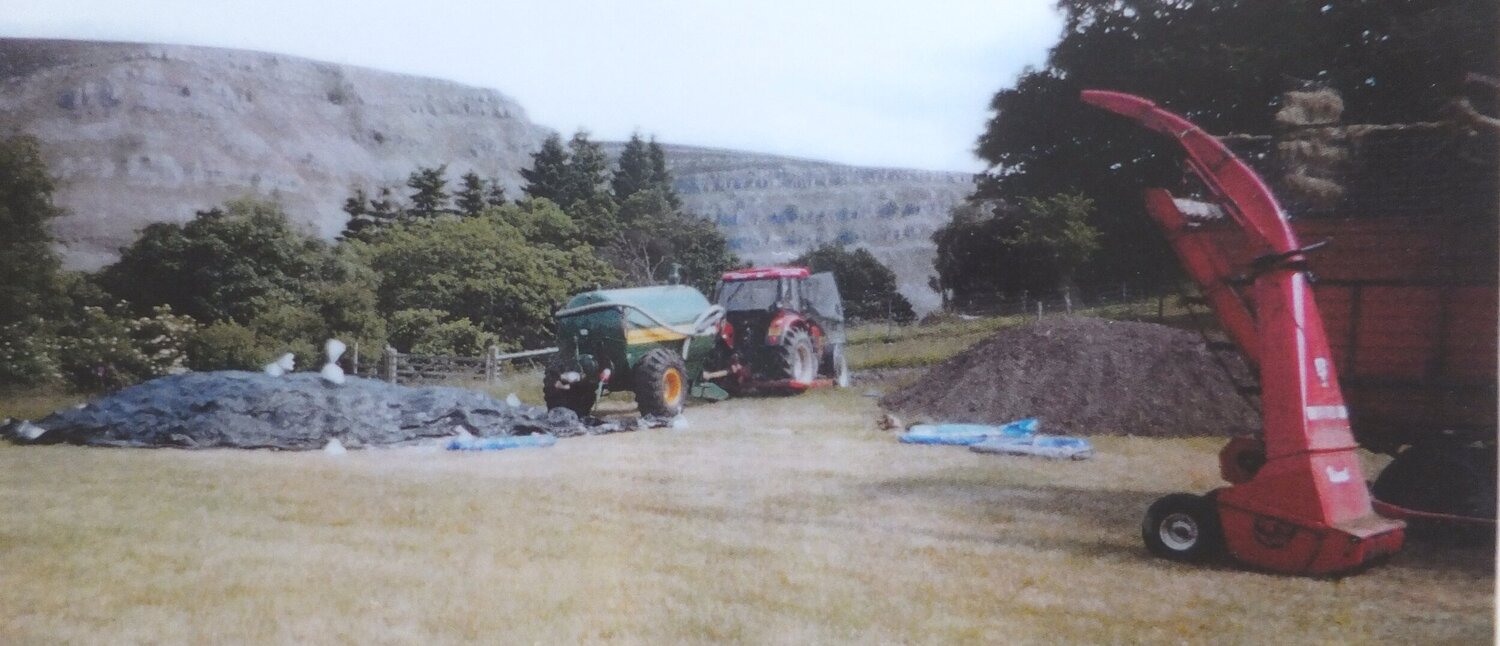Vacuum Silage Bales Pod
This page is under construction as of November 2021.
Discussion is active on The Farming Forum/Livestock and Forage/Vacuum Silage (in the UK).
Bringing the principles of Vacuum Compressed Silage to bales for silage of all shapes and sizes.
VACUUM SILAGE BALES POD
This is Vacuum Silage applied to bales. It is a simple and flexible silage making and storage idea for farms using baled silage. It has the potential to produce even higher quality silage than Yalland Vacuum Compressed Silage field clamps because of the speed with which bales can be sealed and evacuated following baling in the field.
Potentially bales can be in a state of anaerobic fermentation within an hour of wilted grass being baled. That beats the YVCS method by several hours and consequently could reduce losses of carbohydrate and protein to their lowest feasible level in silage making.
Discussions with UK and Norwegian silage makers have raised the problems of variability in the quality of baled silage. Aberystwyth research found that transport of bales often disrupted bagging or wrapping and the damage resulted in spoilt silage. The Vacuum Silage Bale Pod method gets all the transport over with before sealing and evacuating. It uses silage sheets and Silage Sheet Seam to enclose batches of bales in pods with a stack pipe so that a strong vacuum can be applied to each batch, similar to YVCS.
Ideally the storage area would be under cover, but this should work on a hard standing outside with stronger safety sheets. Silage sheets can be loaded with bales, wrapping completely around the stack and sealing in a stack pipe (with valve) that will stay with each pod until feeding time. The use of Silage Sheet Seam would enable a hard vacuum to be applied to the pod by an electric air pump. It would only take a few minutes (with the right pump) to apply a vacuum of at least 8 inches of Mercury to a pod.
Evacuation can be re-applied to each pod following the Carbon Dioxide Response to control the volume of gas in the pod and leave very little for long term storage. Safety sheets to protect the silage sheets would be needed.
Bales would not need to be wrapped or bagged in the field. A band to hold each bale together is all that might be needed, as used for round hay bales. This could reduce plastic sheet waste because the silage sheets used for the pod could be less than the wrapping or bagging required for bales. Costs of sheeting for podding would be similar to costs of wrapping or bagging.
The usual care of the silage sheets would be required and protection from all hazards that might puncture them. The sheets would be disposable and an annual cost. The air pump, stack pipes, valves and safety sheets would be an investment and should last for many years.
The number of bales in a pod would be linked to the feed out rate on the farm. There should be no more bales than can be used in three days of feeding. I would suggest that a maximum height of two oblong bales and a maximum total of 30 oblong bales in each pod should be used.
Pod design is important because of how the enveloping sheet behaves under vacuum. Sheets will pull upwards between bales as well as inwards and down. Bales need to be placed with as little space between them as possible before vacuum extraction. The stack pipe needs to be between bales to anchor its position.
An experimental pod has been used to test Silage Sheet Seam and the BL42 Side Channel Blower using small oblong hay bales.
Small Bales Pod at 280 mbar Vacuum
Experiments with round bales have shown that they are not suitable for bales pods because of their shape. The sheets and Sheet Seam become stressed and fail at low vacuums.
If vacuum is to be applied to round bales of grass forage then it needs to happen to one bale at a time and the bale needs to be bagged and not wrapped. It only takes seconds to shrink down a bagged bale using a BL42 pump and the rig in the image is mobile. The evacuated bale can then be sealed.
New idea for an experiment with individual round bales; One way valve fitted to a short bale pipe that allows for an initial vacuum, pressure relief during the Carbon Dioxide Response, and finally draining down Carbon Dioxide after two days. At that point the bag could be sealed and the valve and pipe could be used for other bales at later times. These would be very fast to install and use with just a push on connenction to a BL42 pump. Suitable valves are sold as “Check Valves” and are made in a range of pipe sizes.

